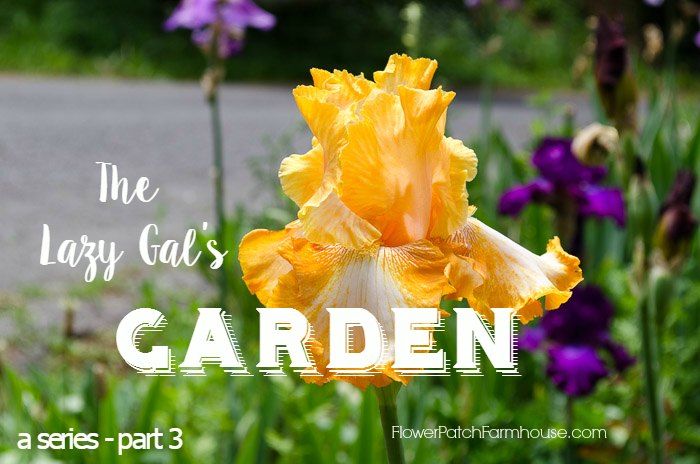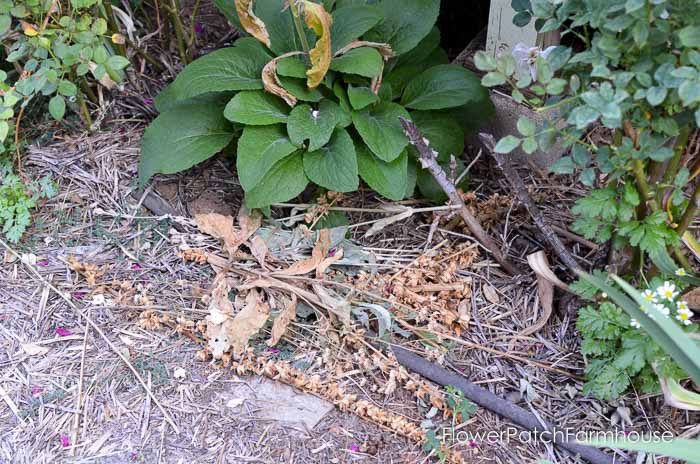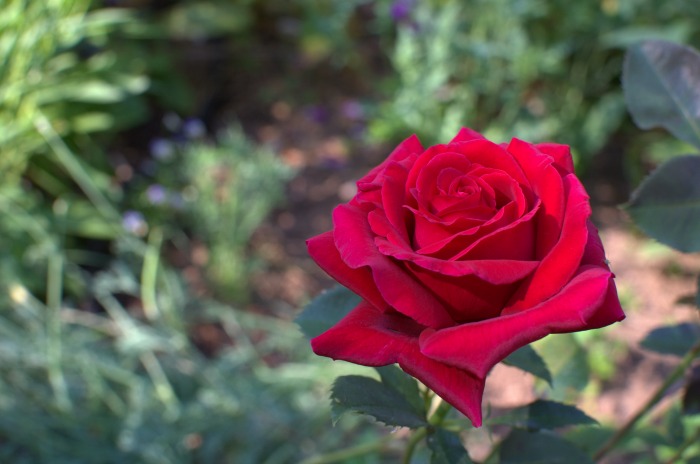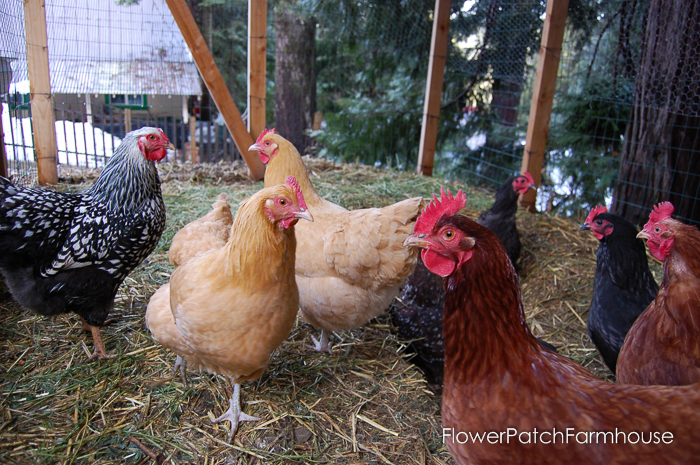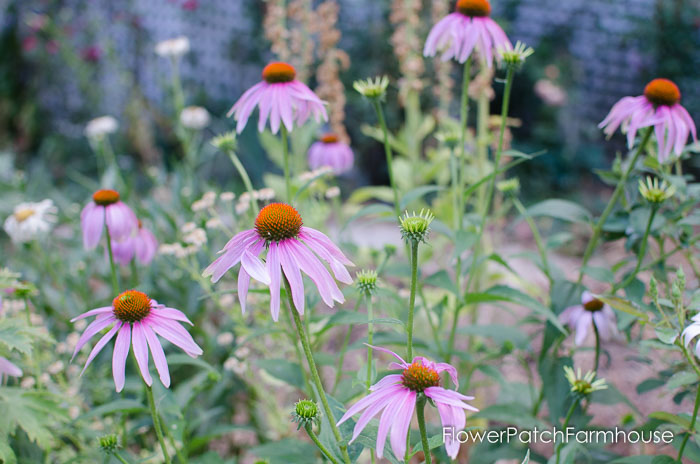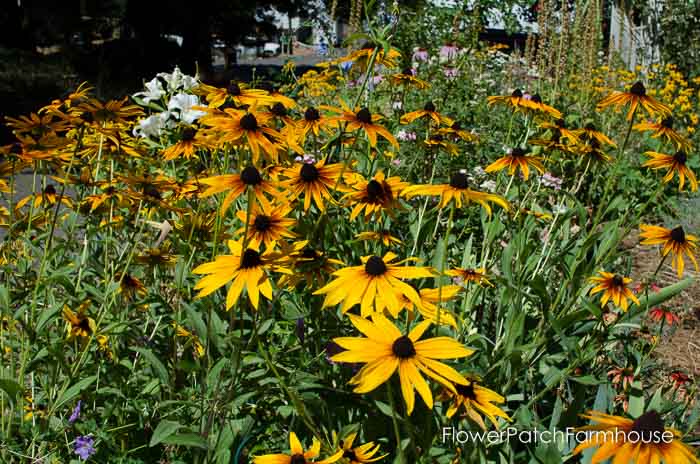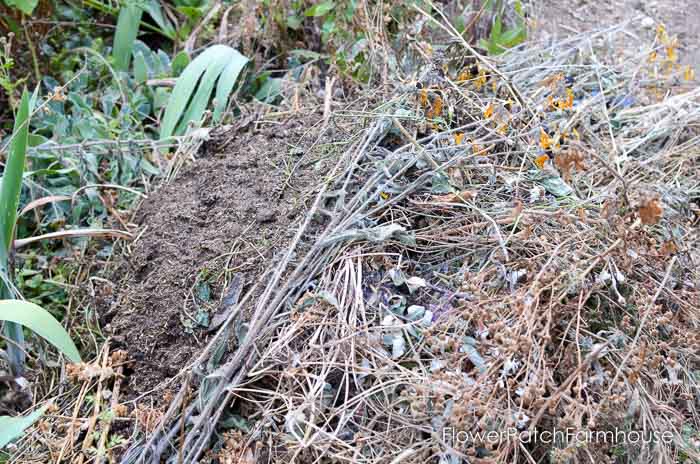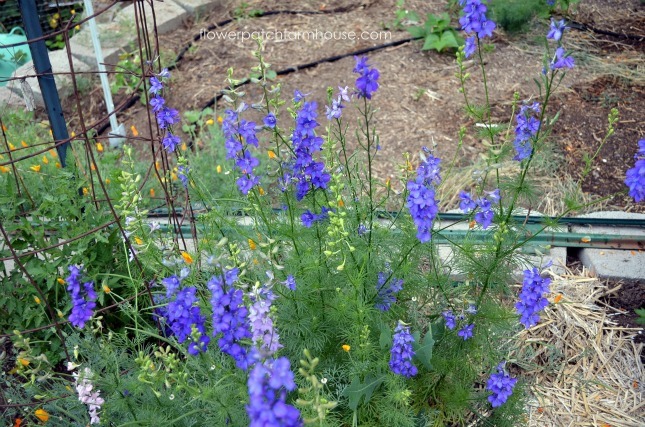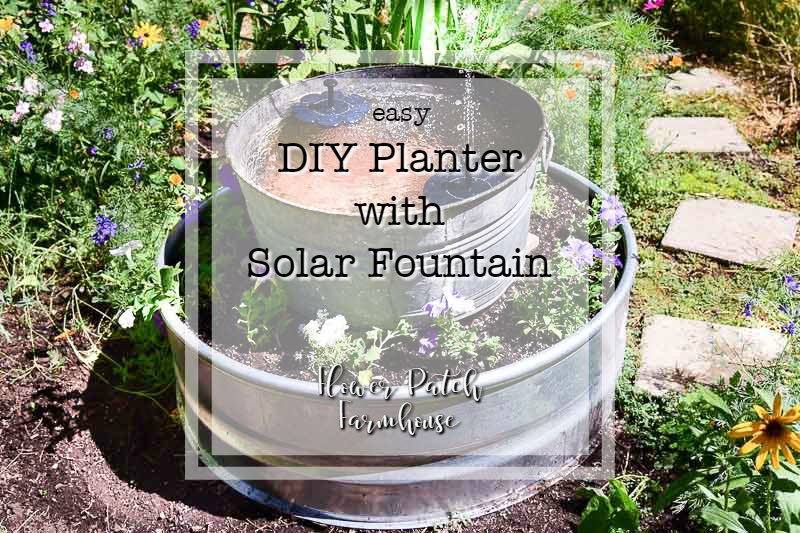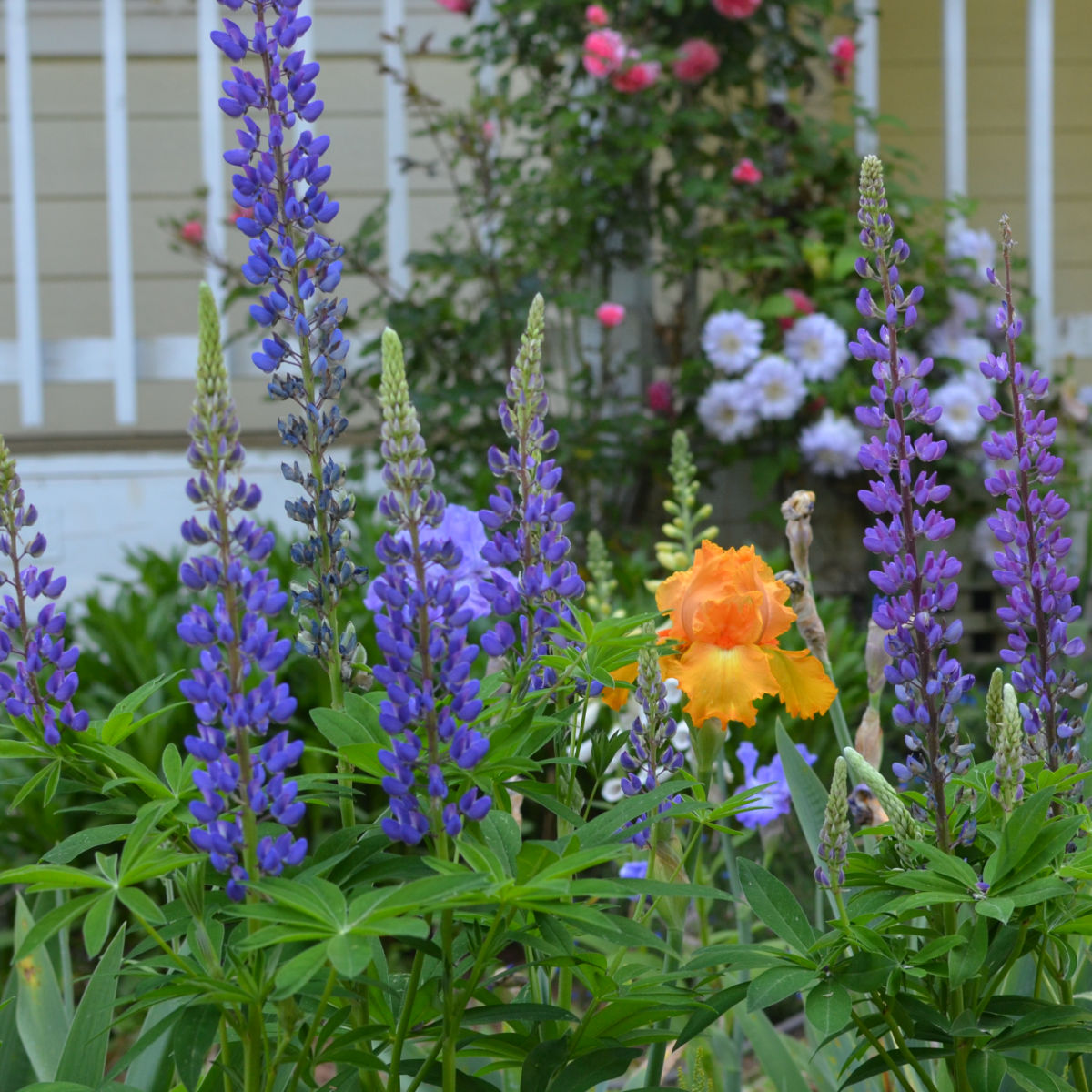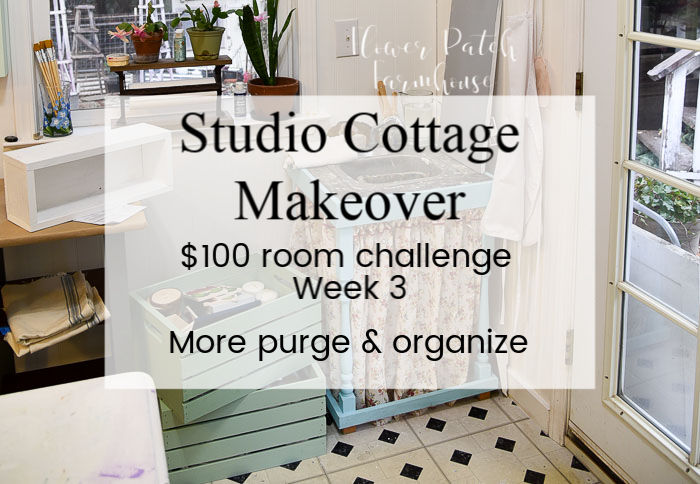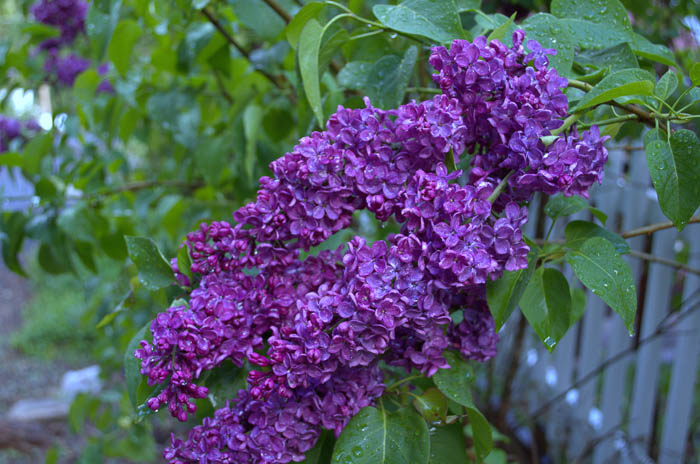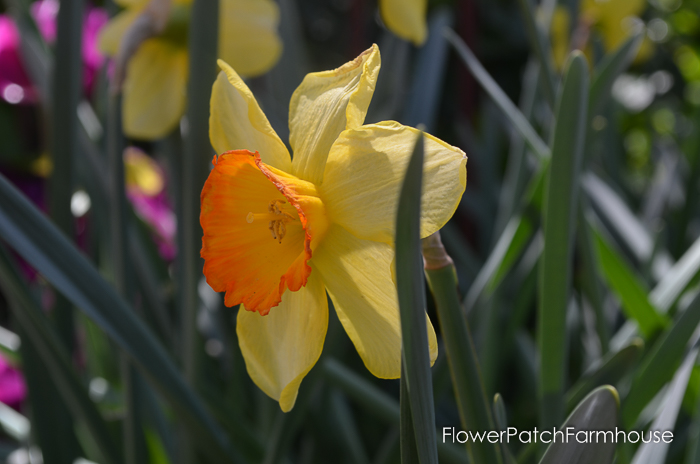Lazy Gal’s Garden Guide – Part 3
Lazy Gal’s Garden Guide – Part 3
Click these links to see Part 1 or Part 2 of this series.
First of all, I need to point out that I don’t follow the traditionally accepted methods of gardening.
Oh, I do follow some guidelines but the hard and fast rules, well let’s just say I break them all the time.
All I know is I have enjoyed growing gorgeous gardens for over 30 years and I have done that by thinking out of the box and trying crazy, new things.
So if you read something here that conflicts with the conventional gardening “wisdom”, don’t be surprised.
#5 Embrace Mess
If you want to garden with ease you need to toss out any tendency to be overly tidy.
I know, that will be a tough one for many. People want everything raked and groomed, not a stray leaf or stick out of place.
Accept the debris.
In fact, I want you to create it!
In the Summer, each morning I take my coffee and walk the garden. It is one of my favorite times, the birds serenade you and the morning air is especially fresh.
In one hand I hold my cup of coffee and in the other I have my Bypass Pruners, as I walk along I snip off any plants that need deadheading or a bit of pruning.
If they are disease free, I cut them off in one or two inch increments and let them fall to the ground. Sometimes I am in a big hurry and just cut off a big chunk and place it at the feet of the plant like this Foxglove.
I do this all summer long.
You may curl up your nose at the sight of it but in reality, you are so busy enjoying the beautiful blooms and swaths of riotous color in the garden that you don’t even notice what is on the ground.
This is basically compositing in place. No need to haul it to a bin or pile, just let it fall to the ground.
The benefit of this method is you are constantly feeding your industrious earthworms. They in turn are feeding your plants with the castings they so generously leave behind. Worms burrow around in the soil making it loose and airy.
Now here is the real shocker…I do this with even my roses!
Okay, I can hear the collective gasp of all those that think you have to remove any and all rose cuttings from the garden in case they have dreaded black spot, fungus or other rose diseases. I am not so fastidious. I do look closely to be sure there are no real issues before trimming away but they are typically treated like any other plant in my garden.
With the healthy soil I have from the years of feeding it the roses are just as healthy.
Healthy soil = Healthy Plants.
Healthy plants have what it takes to fight off most anything.
I do get the bit of powdery mildew when we have a damp early Summer but other than that I have not had many rose issues. You must remember this is where growing what thrives in your area is important. (that was in part 2 of this series)
An alternative, if you really can’t handle the dropped cuttings, put in some edging that will disguise it. A border of stones, bricks, or metal edging would work too.
In the Fall I go around and dump freshly raked chicken manure debris from my chicken pen all around my flowers.
Eeeek you say, fresh chicken manure! That will burn your plants.
Not so. In the Fall when things are going dormant, the manure on top of all that garden debris you left on the ground will just compost.
The plants are not growing actively so the manure does no harm. Over the coming winter month it will break down in place and feed your soil, and make it all the more rich come Spring.
There is a lot of carbon in the dried up plant debris that counters the nitrogen in the manure. Plus the debris from my chicken pen is mixed heavily with the straw and food scraps I have tossed to my chickens and they have eaten, scratched through and pooped on.
#6 Plant En Masse
Plant your flowers in big groups. Not a single spindly plant here and there.
These echinaceas aka: coneflowers voluntarily came up from seed and I let them do their thing. Some are closer together than the recommended spacing listed on seed packets but with healthy soil you can get away with it.
Not only do they make a grand statement when planted in large blocks of color, they also crowd out most weeds.
Most of the time I have to remove many as they take over areas I don’t want them but that is a great problem to have.
If I have a ton to remove I don’t take the time to snip them into pieces I just yank up the entire plant and make a pile nearby. (easy to pull up when your soil is loose from all those worms, they just come right up with a firm tug)
Then I top it with some chicken manure straight out of my chicken pen. I may or may not wet it a bit but this pile will be reduced in size quickly.
It is behind some tall flowering plants so though it is not pretty, it is not easily seen. Another benefit is the birds get to come pick up the seeds that fall from the heads, you will often find them skittering around this pile, trying to get every last little seed.
Planting en masse is especially easy with plants that will profusely reseed themselves. I have several that do and I wrote about them here.
Standard Echinaceas spread easily (the hybrids tend to be sterile or are a little trickier to get to reseed), Black eyed susans are another.
For a touch of blue add some Larkspur.
Daisies, you can find both the regular tall ones or some dwarf selections that add a variety of heights.
These are just some stellar garden performers in my garden that fill in so well but are not hard to pull up if they are in an area I don’t wish them to be.
We will talk more later on backbone plants for the garden and placement for a design pleasing to the eye.
One last thing I wanted to share before ending this post. Botanical Interests has seed Collections available which can make your choices a tad easier. I know having a set selection can help me when there are so many choices to be had.
Next time we get to delve into a bit of garden design so all these plants together don’t just look like a big fat jumble.
Happy Gardening!
